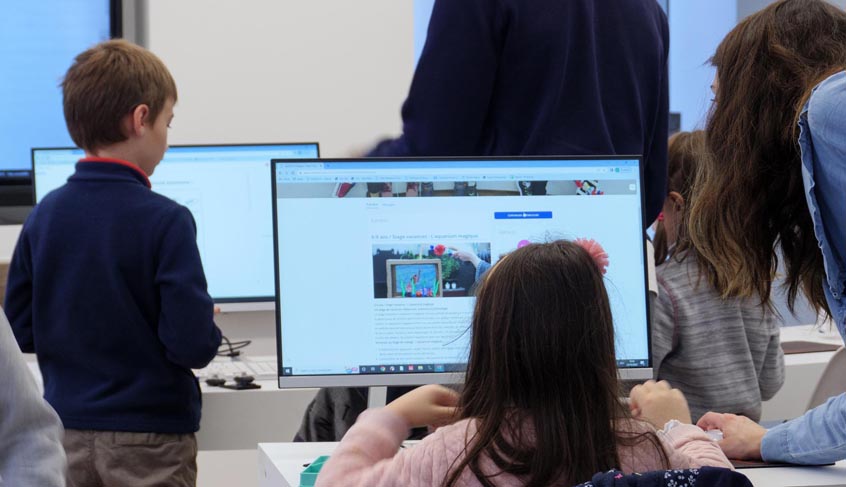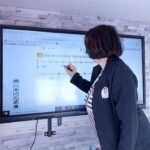Interactive touch screens have proven to be a game-changer in schools and education, due to their ability to create engaging, dynamic learning environments.
Find out what to consider when identifying the right interactive touch screen for educational institution or school.
With so many suppliers, models and types of technology on the market, it is often difficult to pick which interactive touch screen is best for your environment – but at Speechi, we want to make this technology as accessible as possible. Read on for the main practical factors you should keep in mind.
Consider your environment – classroom, seminar room, or lecture hall

To start with, think about the space in which you intend to set up your interactive touch screen. Educational institutions can cover a number of stages, from nursery and reception classes to lecture halls and auditoriums.
In all cases, it is important to take note of the room’s dimensions, depth, and the number of people that your space can accommodate. Larger spaces require larger screens, and vice versa – so this will help you narrow down the models you want by screen-size.
Classrooms are usually around 6 metres in depth, and are able to seat around 30-40 students. For spaces of this size, we would advise opting for 75” interactive touch screen.
If the space you are using is smaller than this, it may be preferable to use a 55” or 65” screen. However, if you intend to set up your interactive touch screen in a seminar room, lecture room or auditorium, you would need an 86” or 98” screen to ensure that everyone in your audience can see and hear clearly.
Consider your audience – are they children, teenagers, or adults?
When using an interactive touch screen in education and school, your audience will be your students – but of course, students can vary a lot in age and height. As an example, an 86” screen would not be a good choice if you are teaching young primary school children.
While they may be able to view the screen in a large space, they will not be able to reach it and interact with it themselves.
Below is a general guideline you can follow for picking interactive whiteboards in school and education.

- Primary school: As we mentioned further up, we would recommend opting for a 65” or 75” screen if your classroom is an average size. However, it is important to note that there is a large difference in height between primary school pupils and teachers, so you would need to use an adjustable screen support that can be made shorter and taller. This way, both the teacher and pupils can interact with it at ease.
- Secondary school and college: At this point, your audience is a group of young adults – so height is no longer an issue. This means you can use whatever screen support you feel would be best for your space – e.g., a free-standing support, wall mount, or height-adjustable support. Depending on how large your class is, a 75” screen may suffice – but for larger spaces and classes, an 86” screen would be a better choice.
- Lecture halls and auditoriums: Seminar rooms, lecture halls and auditoriums are much larger spaces, and often accommodate 100+ people. Keeping in mind this difference in the size of your space, you would need a much larger screen. An 86” or 98” model would be vital in this case, to ensure that everyone in the room can see and hear your presentation.
Still not sure where to start?

Interactive touch screens can prove to be a costly investment, so it is worth going the extra mile to ensure you’re making the right choice. Discover also 10 reasons for teachers to use digital interactive whiteboards.
This is why Speechi’s teams are available to provide tailor-made advice, recommendations and pricing quotes based on your personal needs. We offer 5 display sizes for interactive screens: 55”, 65”, 75”, 86”, and 98” – so you will be sure to find the right one for your space.
To see our interactive whiteboards in person, you can visit our French showrooms in Lille and Paris – or otherwise, simply email or call our teams to get started.




